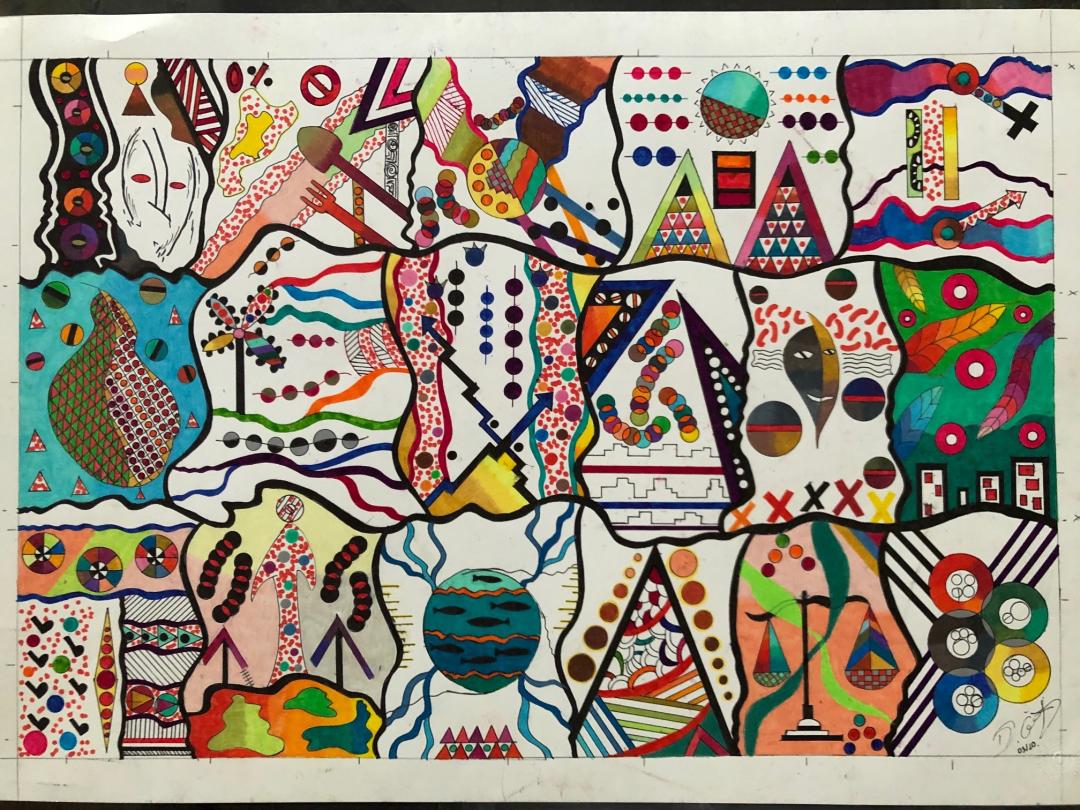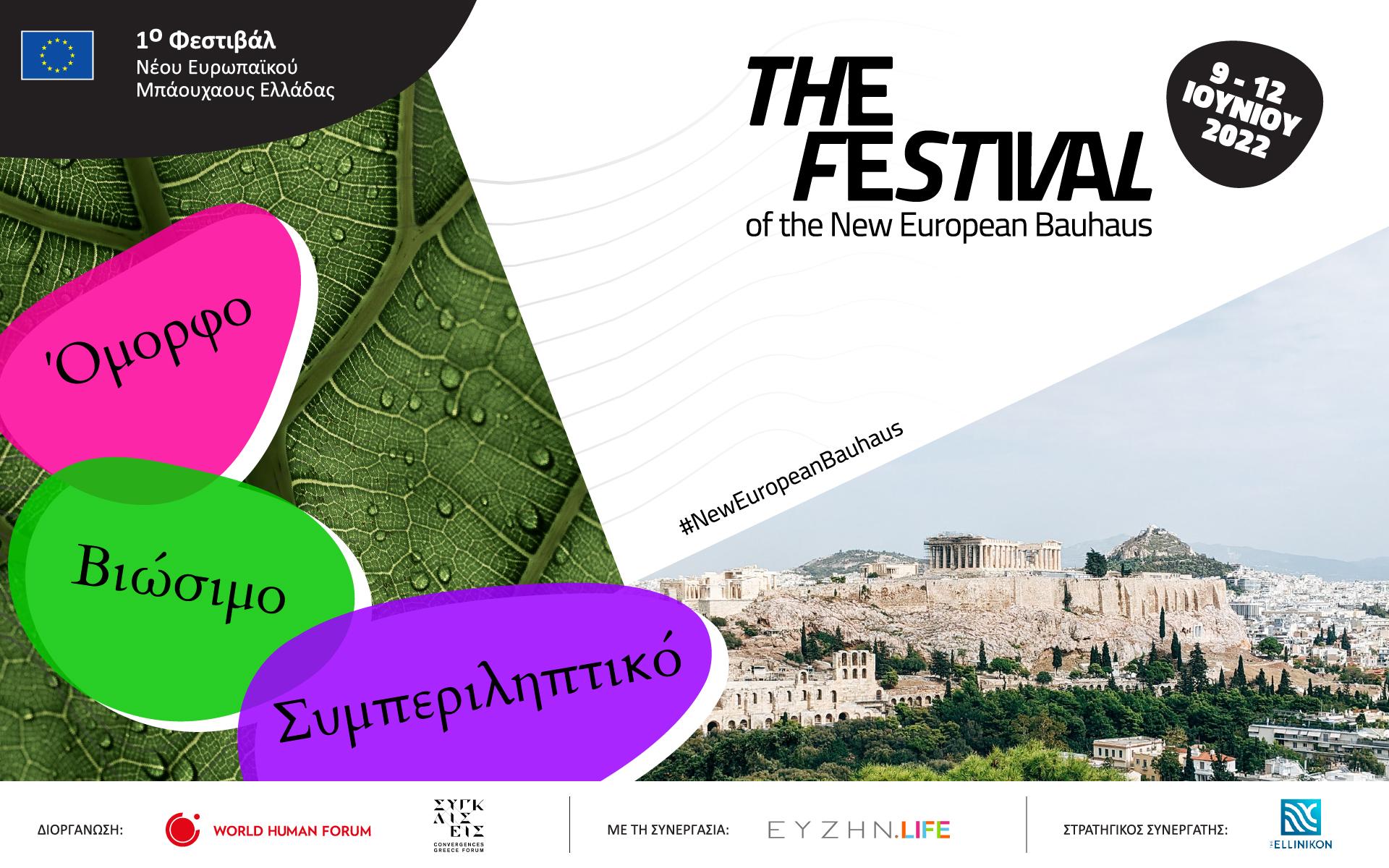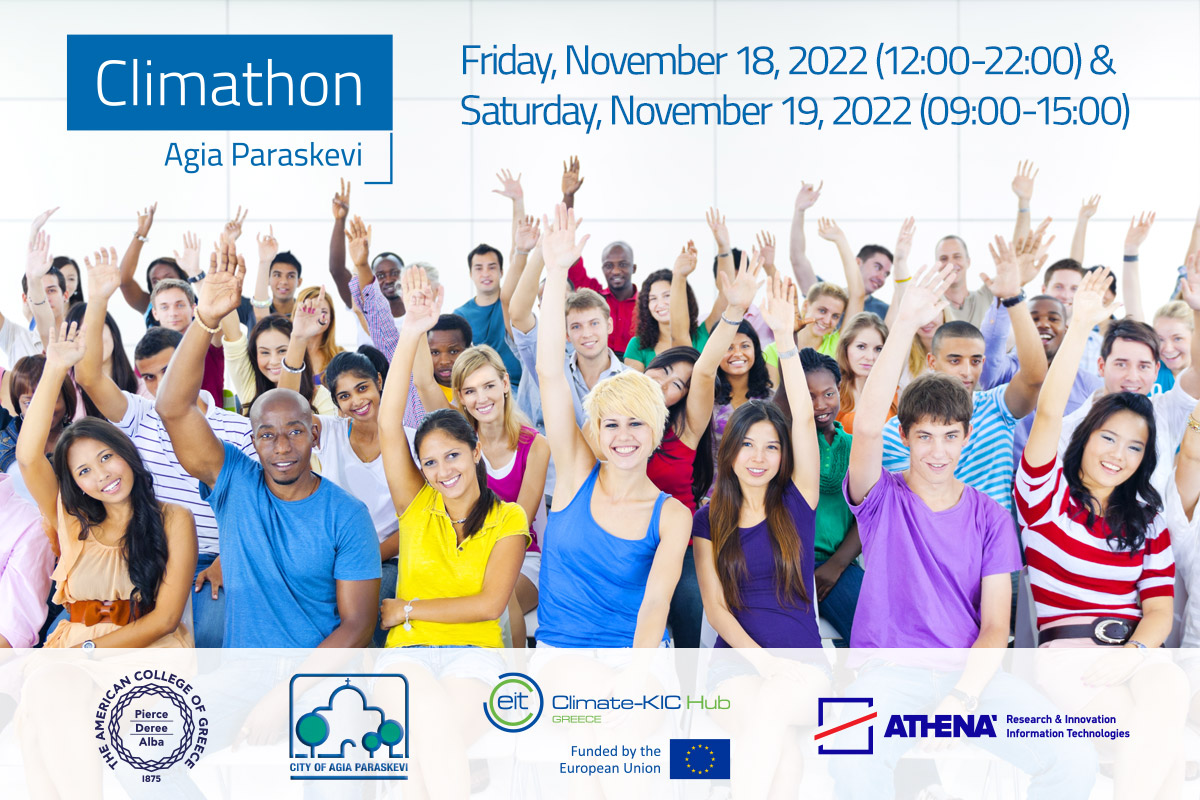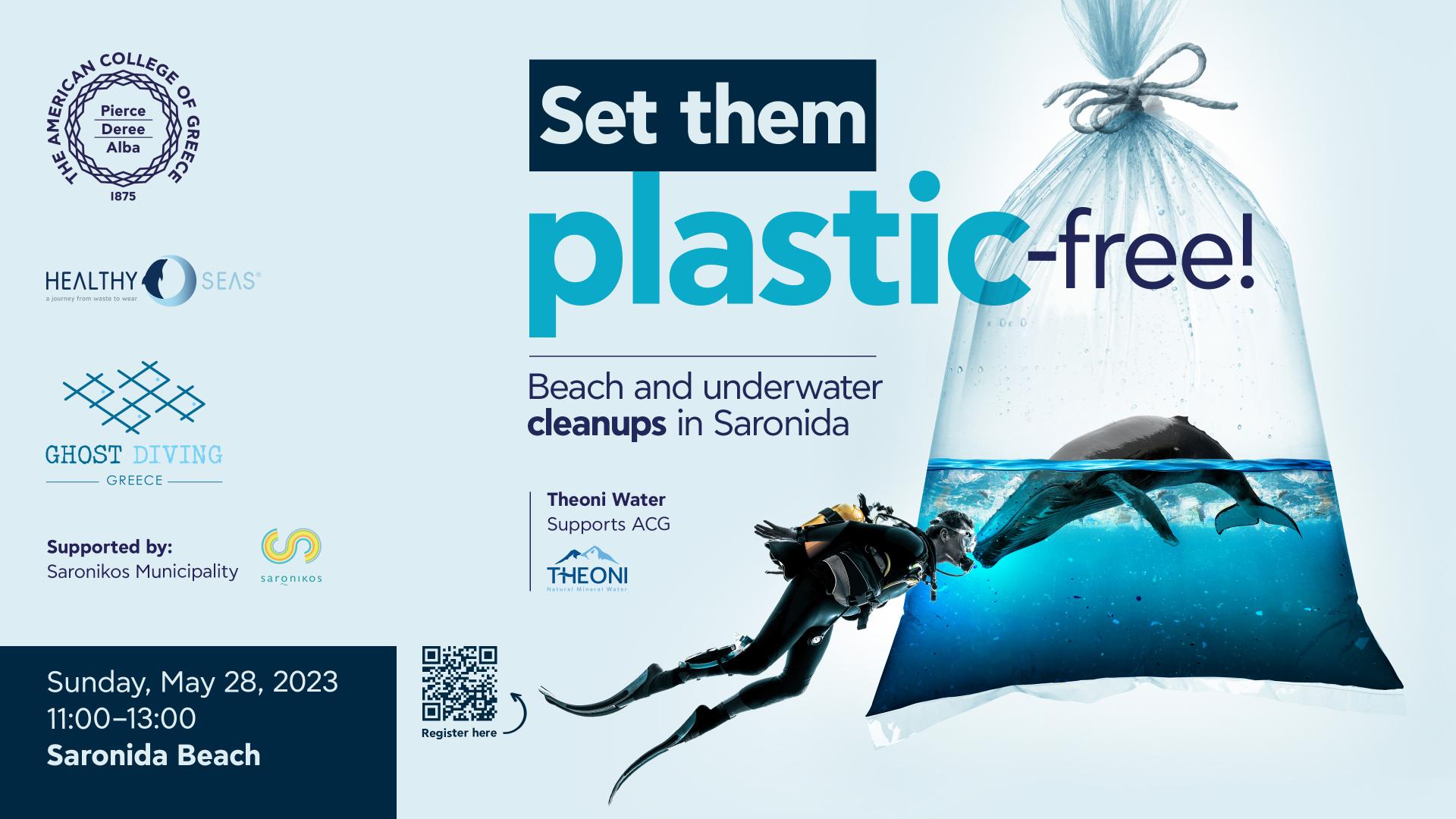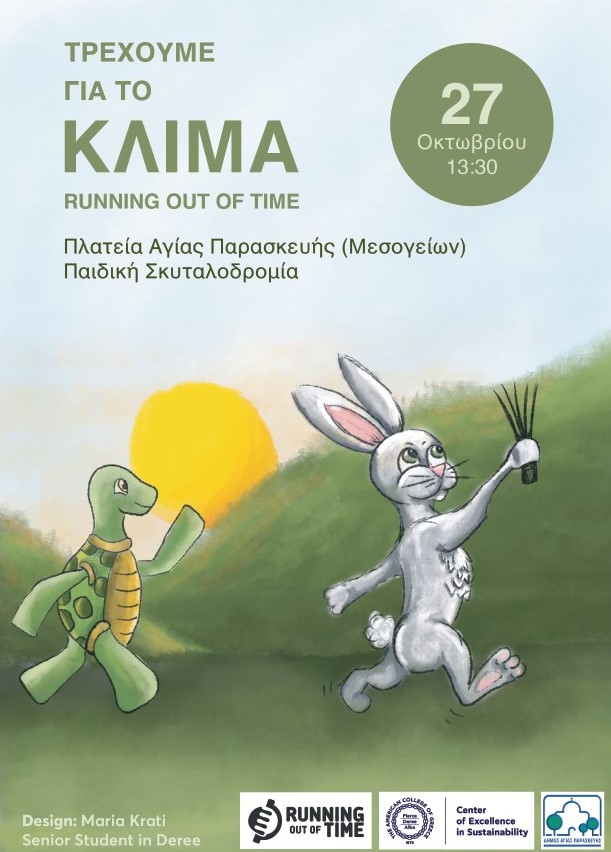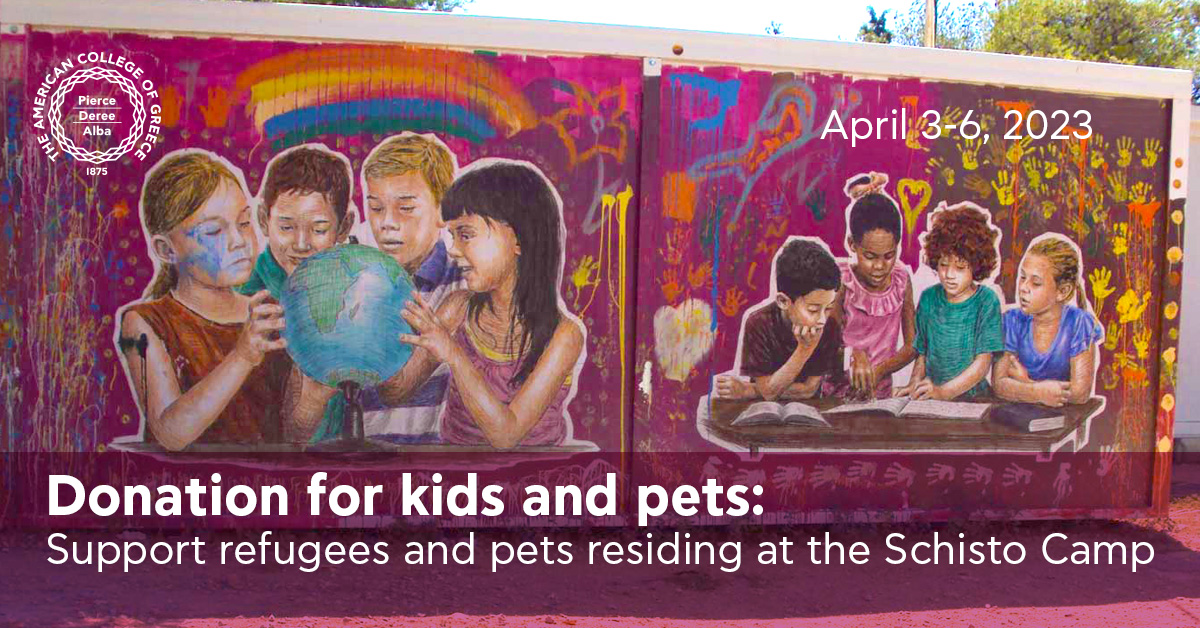A paradigm for higher education (NEBedu)
Basic information
Project Title
A paradigm for higher education (NEBedu)
Full project title
Embedding the NEB principles and implementation in higher education: A paradigm of good practice
Category
Reconnecting with nature
Project Description
The NEBedu project is an educational paradigm of good practice for embedding the principles of the New European Bauhaus in higher education institutions. The educational experiences expand from the classroom to campus to open public spaces to the society. Art, sciences, literature, modern design and aesthetics are combined in interdisciplinary and multidisciplinary ways aiming to reconnect the modern citizens of today and tomorrow with nature.
Geographical Scope
Local
Project Region
Aghia Paraskevi, Greece, Greece
Urban or rural issues
It addresses urban-rural linkages
Physical or other transformations
It refers to other types of transformations (soft investment)
EU Programme or fund
No
Description of the project
Summary
The NEBedu is an ongoing project which integrates NEB principles into higher education, fostering a holistic approach to education. It expands educational experiences beyond the traditional classroom, encompassing campus environments, open public spaces, and broader societal engagement. It utilizes interdisciplinary and multidisciplinary approaches that integrate art, sciences, literature, modern design, and aesthetics, in an effort to assist modern citizens to reconnect with nature, fostering a holistic and sustainable educational experience.
The target groups include the higher education institutions, students, faculty, the institution community and the local society.
The specific objectives are to:
• incorporate the NEB principles of sustainability, urban design, increased aesthetics, inclusiveness into teaching
• focus on experience-based learning processes using the campus as a living laboratory.
• promote interdisciplinary learning by bridging sciences, humanities and arts in classes but also in the everyday campus life.
• create a culture of sustainability within the campus users.
• help students consider how to recreate the campus and urban environment and how to communicate the NEB principles to the local society.
• build an educational paradigm that can be replicated by other educational institutions.
The NEBedu is expected to enhance the environmental consciousness, support community engagement and empower individuals towards achieving sustainability objectives. It is an innovative educational approach addressed to the society. It will continue in the academic years 2023-2024 & 2024-2025 and the expected outcomes include the:
• Reporting on resources/guidelines, including project plans, methodologies, and expected outcomes.
• Reporting on student and faculty projects
• Presenting the final products in relevant events, workshops and student symposiums
• Organize an Award Ceremony for innovative projects encompassing the NEB principles.
The target groups include the higher education institutions, students, faculty, the institution community and the local society.
The specific objectives are to:
• incorporate the NEB principles of sustainability, urban design, increased aesthetics, inclusiveness into teaching
• focus on experience-based learning processes using the campus as a living laboratory.
• promote interdisciplinary learning by bridging sciences, humanities and arts in classes but also in the everyday campus life.
• create a culture of sustainability within the campus users.
• help students consider how to recreate the campus and urban environment and how to communicate the NEB principles to the local society.
• build an educational paradigm that can be replicated by other educational institutions.
The NEBedu is expected to enhance the environmental consciousness, support community engagement and empower individuals towards achieving sustainability objectives. It is an innovative educational approach addressed to the society. It will continue in the academic years 2023-2024 & 2024-2025 and the expected outcomes include the:
• Reporting on resources/guidelines, including project plans, methodologies, and expected outcomes.
• Reporting on student and faculty projects
• Presenting the final products in relevant events, workshops and student symposiums
• Organize an Award Ceremony for innovative projects encompassing the NEB principles.
Key objectives for sustainability
The NEBedu brings together and exposes individuals to education, addressing the core values of sustainability, thus environment, society and economy and expands to include the concepts of culture, high aesthetics and governance. The environmental sustainability key objectives are to:
• Promote Eco-Friendly Practices: Integrate sustainable practices into educational processes and campus operations.
• Environmental Literacy: Foster awareness and understanding of environmental issues among students and the community.
• Resource Efficiency: Implement resource-efficient technologies and practices.
• Exemplary Character in Sustainability: The project sets a benchmark for sustainability in higher education by actively embedding eco-friendly principles into every aspect of the educational experience.
The aesthetic element is addressed through art work and creativity employed to express the environmental and social concerns. The artistic products produced by students, following the educational processes and training on sustainability are exposed to the campus community and will aim to be presented and be implemented to the city. In several cases the art products will be co-designed and co-developed between students of difference classes and backgrounds also with citizens aiming to improve the aesthetics of the city and create a sense of unity belonging, inclusiveness and togetherness. Artworks within NEBedu are seen as tools and means of education and of creating a new sense of culture around encompassing the NEB principles and the elements of sustainability, beauty, inclusiveness into everyday life, ultimately aiming at transforming and improving life in the cities.
• Promote Eco-Friendly Practices: Integrate sustainable practices into educational processes and campus operations.
• Environmental Literacy: Foster awareness and understanding of environmental issues among students and the community.
• Resource Efficiency: Implement resource-efficient technologies and practices.
• Exemplary Character in Sustainability: The project sets a benchmark for sustainability in higher education by actively embedding eco-friendly principles into every aspect of the educational experience.
The aesthetic element is addressed through art work and creativity employed to express the environmental and social concerns. The artistic products produced by students, following the educational processes and training on sustainability are exposed to the campus community and will aim to be presented and be implemented to the city. In several cases the art products will be co-designed and co-developed between students of difference classes and backgrounds also with citizens aiming to improve the aesthetics of the city and create a sense of unity belonging, inclusiveness and togetherness. Artworks within NEBedu are seen as tools and means of education and of creating a new sense of culture around encompassing the NEB principles and the elements of sustainability, beauty, inclusiveness into everyday life, ultimately aiming at transforming and improving life in the cities.
Key objectives for aesthetics and quality
The NEBedu will address key objectives in terms of Aesthetics and Quality of Experience as follow:
• Integrate Aesthetic Values: Infuse aesthetic principles into curriculum design, classes of different majors and disciplines, campus architecture, and public spaces.
• Cultural Appreciation: Promote cultural diversity and appreciation through artistic and aesthetic experiences, supported by the relevant departments and professors.
• Exemplary Character in Aesthetics: NEBedu stands out by enhancing the quality of educational experiences through the integration of artistic and aesthetic elements, creating a unique and enriching environment.
Furthermore, as ACG is an international institution, emphasis is placed on integrating elements of different cultures and experiences into the artworks and the literature that is produced as a result of deep understanding and appreciation of the sustainability principles. The cultural and personal elements are obvious in the stories told as part of student creative projects that focus on use of public urban open spaces, housing, biodiversity and social justice in cities. Special place in the selection of projects so far have ideas that relate to restoring buildings and open spaces with amenity, beauty and sustainability in mind.
• Integrate Aesthetic Values: Infuse aesthetic principles into curriculum design, classes of different majors and disciplines, campus architecture, and public spaces.
• Cultural Appreciation: Promote cultural diversity and appreciation through artistic and aesthetic experiences, supported by the relevant departments and professors.
• Exemplary Character in Aesthetics: NEBedu stands out by enhancing the quality of educational experiences through the integration of artistic and aesthetic elements, creating a unique and enriching environment.
Furthermore, as ACG is an international institution, emphasis is placed on integrating elements of different cultures and experiences into the artworks and the literature that is produced as a result of deep understanding and appreciation of the sustainability principles. The cultural and personal elements are obvious in the stories told as part of student creative projects that focus on use of public urban open spaces, housing, biodiversity and social justice in cities. Special place in the selection of projects so far have ideas that relate to restoring buildings and open spaces with amenity, beauty and sustainability in mind.
Key objectives for inclusion
NEBedu is aiming at ensuring inclusion in all possible ways:
Accessibility and Affordability
Objective: Ensure that education on sustainability is accessible for all students of the American College of Greece (ACG), as it is incorporated in different classes and programs of studies. It adopts a Concept Note that has been developed by the academic board of the Center of Excellence in Sustainability of the ACG and provides guidance on how to enhance or add the sustainability element in classes and programmes of all disciplines.
Inclusive Design Principles
Objective: Integrate design principles that cater to diverse abilities, ensuring inclusivity in the physical and virtual learning environments.
Methods: Incorporate universal design elements in campus architecture, curriculum materials, and digital platforms. The project demonstrates a commitment to inclusivity by adopting design practices that consider the needs of individuals with diverse abilities, fostering an environment where everyone can participate fully.
Design for All Principles
Objective: Infuse the principles of "Design for All" into the educational experience, acknowledging and accommodating the diversity of learners.
Methods: Offer flexible learning pathways, provide varied assessment methods, and create inclusive learning materials. NEBedu exemplifies inclusivity by embracing the concept of "Design for All," recognizing and addressing the unique needs and learning styles of a diverse student population.
New Societal Models
Objective: Explore and promote new societal models that break down traditional barriers and foster a sense of belonging for everyone.
Methods: Collaborate with community organizations, encourage social innovation projects, and integrate community feedback into decision-making. NEBedu goes beyond conventional educational models, actively contributing to the development and promotion of new societal models that prioritize equity, diversity, and inclusivity.
Accessibility and Affordability
Objective: Ensure that education on sustainability is accessible for all students of the American College of Greece (ACG), as it is incorporated in different classes and programs of studies. It adopts a Concept Note that has been developed by the academic board of the Center of Excellence in Sustainability of the ACG and provides guidance on how to enhance or add the sustainability element in classes and programmes of all disciplines.
Inclusive Design Principles
Objective: Integrate design principles that cater to diverse abilities, ensuring inclusivity in the physical and virtual learning environments.
Methods: Incorporate universal design elements in campus architecture, curriculum materials, and digital platforms. The project demonstrates a commitment to inclusivity by adopting design practices that consider the needs of individuals with diverse abilities, fostering an environment where everyone can participate fully.
Design for All Principles
Objective: Infuse the principles of "Design for All" into the educational experience, acknowledging and accommodating the diversity of learners.
Methods: Offer flexible learning pathways, provide varied assessment methods, and create inclusive learning materials. NEBedu exemplifies inclusivity by embracing the concept of "Design for All," recognizing and addressing the unique needs and learning styles of a diverse student population.
New Societal Models
Objective: Explore and promote new societal models that break down traditional barriers and foster a sense of belonging for everyone.
Methods: Collaborate with community organizations, encourage social innovation projects, and integrate community feedback into decision-making. NEBedu goes beyond conventional educational models, actively contributing to the development and promotion of new societal models that prioritize equity, diversity, and inclusivity.
Results in relation to category
The expected outcomes and impacts can be grouped to 3 main categories:
Educational Enhancement: Enhancing student engagement and improving learning outcomes that involves innovative approaches and comprehensive educational strategies. By integrating the principles of sustainability, aesthetics, and innovation into the curriculum, our educational institution and the institutions in which the NEBedu can be replicated create an enriched learning environment. This is achieved through interactive and interdisciplinary teaching methods, project-based learning, and real-world applications of theoretical concepts.
Community Empowerment: Strengthening ties between the educational institution/s and their surrounding communities is pivotal for mutual growth and development. Engaging with local communities through the created outreach approach, collaborative projects, and service-learning initiatives fosters a sense of belonging and shared responsibility. The ACG can facilitate workshops, seminars, or skill-building sessions that address community needs while integrating sustainable practices and artistic expression. This collaboration creates a platform for knowledge exchange, where academic expertise (faculty and students) meets practical community insights.
Societal Impact: Equipping students and graduates with a holistic understanding of sustainability, aesthetics, and innovation empowers them to become catalysts for positive societal change. Students develop a deeper appreciation for ethical decision-making and the interconnectedness between society, environment, and culture and have the ability to bring a multidimensional perspective to various sectors, fostering innovation in business, policy, design, and community development.
Educational Enhancement: Enhancing student engagement and improving learning outcomes that involves innovative approaches and comprehensive educational strategies. By integrating the principles of sustainability, aesthetics, and innovation into the curriculum, our educational institution and the institutions in which the NEBedu can be replicated create an enriched learning environment. This is achieved through interactive and interdisciplinary teaching methods, project-based learning, and real-world applications of theoretical concepts.
Community Empowerment: Strengthening ties between the educational institution/s and their surrounding communities is pivotal for mutual growth and development. Engaging with local communities through the created outreach approach, collaborative projects, and service-learning initiatives fosters a sense of belonging and shared responsibility. The ACG can facilitate workshops, seminars, or skill-building sessions that address community needs while integrating sustainable practices and artistic expression. This collaboration creates a platform for knowledge exchange, where academic expertise (faculty and students) meets practical community insights.
Societal Impact: Equipping students and graduates with a holistic understanding of sustainability, aesthetics, and innovation empowers them to become catalysts for positive societal change. Students develop a deeper appreciation for ethical decision-making and the interconnectedness between society, environment, and culture and have the ability to bring a multidimensional perspective to various sectors, fostering innovation in business, policy, design, and community development.
How Citizens benefit
The main beneficiaries and co-developers of the project are the students, who are directly impacted through research opportunities, educational enhancements, or changes in the curriculum and in the methods, quality and content of teaching. Professors and researchers on the other hand are involved in the project's implementation, management, or funding. Furthermore, administrative and other staff of the university are involved through getting educated through the examples they are exposed to via the several activities and operations related to NEBedu. Administrative leaders are those who may be asked to allocate resources or set policies affecting the project, such as allow or even approve funding for the implementation of built projects, restoration works on campus, exhibitions (permanent or temporary) or artworks on the topics of sustainability and inclusiveness.
For ideas and proposals on the restoration of open public spaces or public displays of artworks, the collaboration with the local community (residents, businesses, organizations, NGOs in the vicinity of the university) is sought. The municipal authorities are and will continue to collaborate with faculty and students in order to provide support when and if required, especially in showcasing new innovative constructions, ideas, exhibits, artwork in open public spaces. Media and the public, although not directly involved in the project they are called to promote the innovative work produced.
Stakeholder engagement is crucial for ensuring the project's success, obtaining support, and aligning the project's objectives with the needs and expectations of those involved or affected by it. Broadening the spectrum of stakeholders and encouraging active participation, increase the element of inclusivity and fairness. Regular updates and feedback to all parties, while trying to adequately address their concerns and expectations, ensure their involvement increase transparency, flexibility and adaptability.
For ideas and proposals on the restoration of open public spaces or public displays of artworks, the collaboration with the local community (residents, businesses, organizations, NGOs in the vicinity of the university) is sought. The municipal authorities are and will continue to collaborate with faculty and students in order to provide support when and if required, especially in showcasing new innovative constructions, ideas, exhibits, artwork in open public spaces. Media and the public, although not directly involved in the project they are called to promote the innovative work produced.
Stakeholder engagement is crucial for ensuring the project's success, obtaining support, and aligning the project's objectives with the needs and expectations of those involved or affected by it. Broadening the spectrum of stakeholders and encouraging active participation, increase the element of inclusivity and fairness. Regular updates and feedback to all parties, while trying to adequately address their concerns and expectations, ensure their involvement increase transparency, flexibility and adaptability.
Physical or other transformations
It refers to other types of transformations (soft investment)
Innovative character
The NEBedu innovative character is based on the following ideas:
Interdisciplinary Learning: Depart from traditional siloed disciplines to foster innovative thinking through interdisciplinary education and through bridging different ideas and knowledge, e.g. mobilizing art as a means of education for sciences, technology.
Innovative Curriculum: NEBedu pioneers an innovative curriculum that not only educates students on sustainability but embeds sustainable practices in every aspect of the educational process, from resource use in classrooms to sustainable campus operations.
Green Infrastructure: The project incorporates sustainable architecture and green spaces in campus design, creating a living and learning environment that embodies ecological principles.
Technological Integration: Utilize cutting-edge technologies to enhance the learning experience and campus operations.
Long-term Commitment: NEBedu aims to set a lasting example by embedding inclusive practices into the core of higher education, influencing future generations of educators and institutions to prioritize inclusivity.
Innovation, as seen within NEBedu can drive transformative change in various sectors:
Sustainability: In the context of NEBedu this includes innovation that integrates environmental considerations into design, construction, materials, and daily life to create a more sustainable future.
Beauty: NEBedu encourages integration of beauty into innovative solutions that involve not only functionality but also an aesthetic appeal that enhances user experience and appreciation, it is user-friendly and fosters a sense of harmony between form and function.
Inclusiveness: NEBedu encourages innovation that bridge gaps in accessibility, inclusive design thinking that considers diverse user needs, or social innovations that address inequalities and ensures everyone, regardless of background or ability, can benefit from and contribute to these advancements.
Interdisciplinary Learning: Depart from traditional siloed disciplines to foster innovative thinking through interdisciplinary education and through bridging different ideas and knowledge, e.g. mobilizing art as a means of education for sciences, technology.
Innovative Curriculum: NEBedu pioneers an innovative curriculum that not only educates students on sustainability but embeds sustainable practices in every aspect of the educational process, from resource use in classrooms to sustainable campus operations.
Green Infrastructure: The project incorporates sustainable architecture and green spaces in campus design, creating a living and learning environment that embodies ecological principles.
Technological Integration: Utilize cutting-edge technologies to enhance the learning experience and campus operations.
Long-term Commitment: NEBedu aims to set a lasting example by embedding inclusive practices into the core of higher education, influencing future generations of educators and institutions to prioritize inclusivity.
Innovation, as seen within NEBedu can drive transformative change in various sectors:
Sustainability: In the context of NEBedu this includes innovation that integrates environmental considerations into design, construction, materials, and daily life to create a more sustainable future.
Beauty: NEBedu encourages integration of beauty into innovative solutions that involve not only functionality but also an aesthetic appeal that enhances user experience and appreciation, it is user-friendly and fosters a sense of harmony between form and function.
Inclusiveness: NEBedu encourages innovation that bridge gaps in accessibility, inclusive design thinking that considers diverse user needs, or social innovations that address inequalities and ensures everyone, regardless of background or ability, can benefit from and contribute to these advancements.
Disciplines/knowledge reflected
NEBedu has engaged faculty with expertise and experiences from a wide range of disciplines:
STEM: Environmental Science; Biomedical Sciences, Design, Landscape design
Social Sciences
IT on digitalisation of artwork and production of digital tools
Arts: Painters, visual artists, musicians.
Engineers: on urban design and innovative materials.
Literature to support the story telling and poems.
Furthermore, the students involved come from a number of disciplines including students of the International Honors Program, whose studies are based on a multidisciplinary and interdisciplinary approach.
STEM: Environmental Science; Biomedical Sciences, Design, Landscape design
Social Sciences
IT on digitalisation of artwork and production of digital tools
Arts: Painters, visual artists, musicians.
Engineers: on urban design and innovative materials.
Literature to support the story telling and poems.
Furthermore, the students involved come from a number of disciplines including students of the International Honors Program, whose studies are based on a multidisciplinary and interdisciplinary approach.
Methodology used
The NEBedu methodology includes:
Curriculum Revision and In-Class Work:
Revise the curriculum to include interdisciplinary modules that integrate art, design, sustainability, and innovation across various disciplines.
Implement project-based learning approaches where students collaborate across disciplines to solve real-world problems, emphasizing NEB principles.
Invite guest lecturers/experts from diverse fields to conduct workshops, seminars, or lectures, enriching the learning experience and providing practical insights.
Campus as a Living Lab:
Identify areas on campus to serve as demo sites-living labs, integrating sustainable design elements and artistic installations, showcasing NEB principles in action.
Empower students to propose and implement student-led projects that enhance sustainability on campus, encouraging them to use the campus as a canvas for experimentation and innovation.
Emphasize on experiential learning by Organizing field trips or site visits to exemplify sustainable practices, design, or artistic endeavors.
Education to the University Community:
Facilitate student-led activities, clubs, forums, or events focusing on sustainability, art, and innovation, fostering a vibrant educational community.
Encourage interdisciplinary collaboration among students, faculty, and staff to implement sustainable initiatives within the university.
Education to Society:
Organize community workshops, seminars, or public talks, promoting awareness and understanding of NEB principles.
Collaborate with local organizations or authorities on projects that address community needs while integrating sustainability and artistic elements.
Outreach:
Organize symposiums and/or award ceremonies that bring together experts, practitioners, and students to share research, experiences, and innovative ideas related to NEB principles.
Host public events, exhibitions, or showcases to display student work and projects aligned with NEB principles.
Curriculum Revision and In-Class Work:
Revise the curriculum to include interdisciplinary modules that integrate art, design, sustainability, and innovation across various disciplines.
Implement project-based learning approaches where students collaborate across disciplines to solve real-world problems, emphasizing NEB principles.
Invite guest lecturers/experts from diverse fields to conduct workshops, seminars, or lectures, enriching the learning experience and providing practical insights.
Campus as a Living Lab:
Identify areas on campus to serve as demo sites-living labs, integrating sustainable design elements and artistic installations, showcasing NEB principles in action.
Empower students to propose and implement student-led projects that enhance sustainability on campus, encouraging them to use the campus as a canvas for experimentation and innovation.
Emphasize on experiential learning by Organizing field trips or site visits to exemplify sustainable practices, design, or artistic endeavors.
Education to the University Community:
Facilitate student-led activities, clubs, forums, or events focusing on sustainability, art, and innovation, fostering a vibrant educational community.
Encourage interdisciplinary collaboration among students, faculty, and staff to implement sustainable initiatives within the university.
Education to Society:
Organize community workshops, seminars, or public talks, promoting awareness and understanding of NEB principles.
Collaborate with local organizations or authorities on projects that address community needs while integrating sustainability and artistic elements.
Outreach:
Organize symposiums and/or award ceremonies that bring together experts, practitioners, and students to share research, experiences, and innovative ideas related to NEB principles.
Host public events, exhibitions, or showcases to display student work and projects aligned with NEB principles.
How stakeholders are engaged
Engaging stakeholders at different levels in the design and implementation of NEBedu is crucial for its success and relevance.
The stakeholders engaged are:
Local Stakeholders:
Students, Faculty and Staff of the University are both beneficiaries and providers of knowledge
Local communities, municipalities, and neighborhood organizations:
They play a pivotal role. They offer insights into local challenges, cultural context, and community needs relevant to sustainability and artistic endeavors. Engaging local stakeholders could involve community forums, workshops, or consultations to gather input on the project's alignment with local priorities and values. They have been involved in several activities and will be further involved in the planned activities.
• Their involvement ensures that the NEB project resonates with the community's aspirations, enhancing its relevance and fostering a sense of ownership among local residents.
2. Regional Stakeholders:
• Collaborations with regional governments, other educational institutions, and businesses can contribute resources, expertise, and support networks. The collaboration with regional stakeholders might involve partnerships in curriculum development, funding opportunities, or providing access to regional networks and infrastructure. Their involvement brings regional context and resources, facilitating the implementation of NEB principles within the broader regional framework and promoting regional cohesion.
3. National Stakeholders:
• Role: National governments, educational bodies, industry associations, and funding agencies contribute policy support, funding, and expertise. Support of such institutions is always sought in order to provide the framework of action regarding events and activities of national importance. Such collaborations include networks of experts on climate change, biodiversity, collaborations with Museums and art galle
The stakeholders engaged are:
Local Stakeholders:
Students, Faculty and Staff of the University are both beneficiaries and providers of knowledge
Local communities, municipalities, and neighborhood organizations:
They play a pivotal role. They offer insights into local challenges, cultural context, and community needs relevant to sustainability and artistic endeavors. Engaging local stakeholders could involve community forums, workshops, or consultations to gather input on the project's alignment with local priorities and values. They have been involved in several activities and will be further involved in the planned activities.
• Their involvement ensures that the NEB project resonates with the community's aspirations, enhancing its relevance and fostering a sense of ownership among local residents.
2. Regional Stakeholders:
• Collaborations with regional governments, other educational institutions, and businesses can contribute resources, expertise, and support networks. The collaboration with regional stakeholders might involve partnerships in curriculum development, funding opportunities, or providing access to regional networks and infrastructure. Their involvement brings regional context and resources, facilitating the implementation of NEB principles within the broader regional framework and promoting regional cohesion.
3. National Stakeholders:
• Role: National governments, educational bodies, industry associations, and funding agencies contribute policy support, funding, and expertise. Support of such institutions is always sought in order to provide the framework of action regarding events and activities of national importance. Such collaborations include networks of experts on climate change, biodiversity, collaborations with Museums and art galle
Global challenges
The NEBedu can address global environmental and social issues in various ways:
• Education and Advocacy: Community-based environmental education programs led by scientists in collaboration with artists or local organizations that can empower people with knowledge about ecological issues. This can include workshops, seminars, or storytelling sessions that blend art and science to promote environmental stewardship.
• Community Engagement through Art: Students act as local artists who can use their work to raise awareness about environmental issues specific to their region. Art installations, performances, or murals can convey messages about climate change, conservation, or sustainable living, fostering community engagement and dialogue.
• Cultural Preservation and Sustainability: Incorporate traditional practices that are inherently sustainable into innovative solutions. Encouraging and preserving these practices through artistic expression helps maintain ecological balance while celebrating local culture.
• Green Infrastructure and Design: Integrating scientific findings and art into the design of green spaces, parks, or sustainable infrastructure projects not only enhances aesthetics but also encourages environmental consciousness.
• Promoting Behavioral Change: Knowledge, art and social inclusion have the power to evoke emotions and inspire action. Local projects that highlight the consequences of environmental degradation and/or injustice or showcase sustainable living practices can encourage behavioral changes within communities.
• Local Policy and Advocacy: Community-driven art initiatives that can advocate for local policies supporting environmental stewardship.
• Nature-Inspired Creativity: Encouraging artists to draw inspiration from nature can foster a deeper connection between people and the environment. This approach can lead to innovative solutions and products that are eco-friendly and sustainable.
• Education and Advocacy: Community-based environmental education programs led by scientists in collaboration with artists or local organizations that can empower people with knowledge about ecological issues. This can include workshops, seminars, or storytelling sessions that blend art and science to promote environmental stewardship.
• Community Engagement through Art: Students act as local artists who can use their work to raise awareness about environmental issues specific to their region. Art installations, performances, or murals can convey messages about climate change, conservation, or sustainable living, fostering community engagement and dialogue.
• Cultural Preservation and Sustainability: Incorporate traditional practices that are inherently sustainable into innovative solutions. Encouraging and preserving these practices through artistic expression helps maintain ecological balance while celebrating local culture.
• Green Infrastructure and Design: Integrating scientific findings and art into the design of green spaces, parks, or sustainable infrastructure projects not only enhances aesthetics but also encourages environmental consciousness.
• Promoting Behavioral Change: Knowledge, art and social inclusion have the power to evoke emotions and inspire action. Local projects that highlight the consequences of environmental degradation and/or injustice or showcase sustainable living practices can encourage behavioral changes within communities.
• Local Policy and Advocacy: Community-driven art initiatives that can advocate for local policies supporting environmental stewardship.
• Nature-Inspired Creativity: Encouraging artists to draw inspiration from nature can foster a deeper connection between people and the environment. This approach can lead to innovative solutions and products that are eco-friendly and sustainable.
Learning transferred to other parties
The transferability and replicability of the NEBedu educational experience refer to the project's adaptability to different environments, institutions, or communities while maintaining its core objectives and effectiveness.
The factors that usually enhance the transferability and are present in NEBedu include:
• Flexibility: The project is designed with adaptable components that can be modified to suit varying contexts, curricula, even educational levels without compromising its essence.
• Scalability: NEBedu can be scaled up or down to fit different sizes or scopes without losing its effectiveness.
• Restructured curriculum: It provides recommendations that facilitate the project's implementation in diverse settings, thus other educational institutions.
Key elements for enhancing replicability of NEBedu include:
• Clear Methodology: Step-by-step methodology, procedures, and best practices included in the syllabi and/or the supporting teaching material and teaching outlines, including the design of participatory processes, new learning objects and teaching example that can be easily implemented in other classes or disciplines
• Standardization: Standardize key aspects of the project, like specific exercises and processes to make it easily replicable without losing its quality or intended outcomes.
NEBedu is an educational process on STEAM education demonstrating transferability by adapting its curriculum to suit different educational systems while maintaining core STEAM principles. Replicability, on the other hand, could involve providing detailed guidelines and training for teachers or educators in different regions to implement the program successfully.
The factors that usually enhance the transferability and are present in NEBedu include:
• Flexibility: The project is designed with adaptable components that can be modified to suit varying contexts, curricula, even educational levels without compromising its essence.
• Scalability: NEBedu can be scaled up or down to fit different sizes or scopes without losing its effectiveness.
• Restructured curriculum: It provides recommendations that facilitate the project's implementation in diverse settings, thus other educational institutions.
Key elements for enhancing replicability of NEBedu include:
• Clear Methodology: Step-by-step methodology, procedures, and best practices included in the syllabi and/or the supporting teaching material and teaching outlines, including the design of participatory processes, new learning objects and teaching example that can be easily implemented in other classes or disciplines
• Standardization: Standardize key aspects of the project, like specific exercises and processes to make it easily replicable without losing its quality or intended outcomes.
NEBedu is an educational process on STEAM education demonstrating transferability by adapting its curriculum to suit different educational systems while maintaining core STEAM principles. Replicability, on the other hand, could involve providing detailed guidelines and training for teachers or educators in different regions to implement the program successfully.
Keywords
Interdisciplinarity
Sustainability
Aesthetics
Education
Inclusiveness

